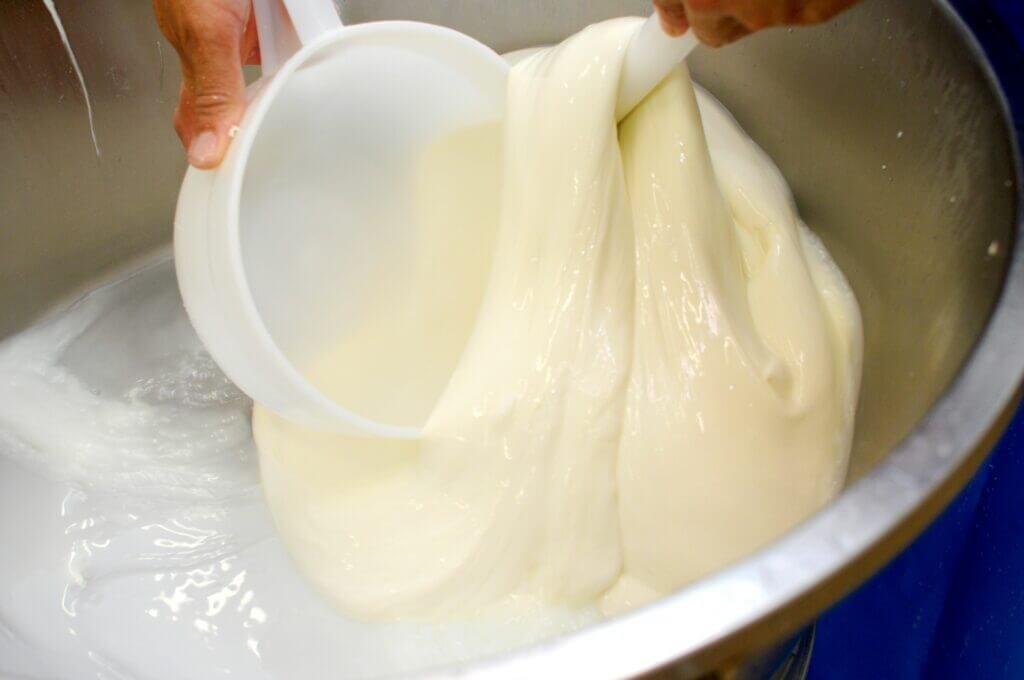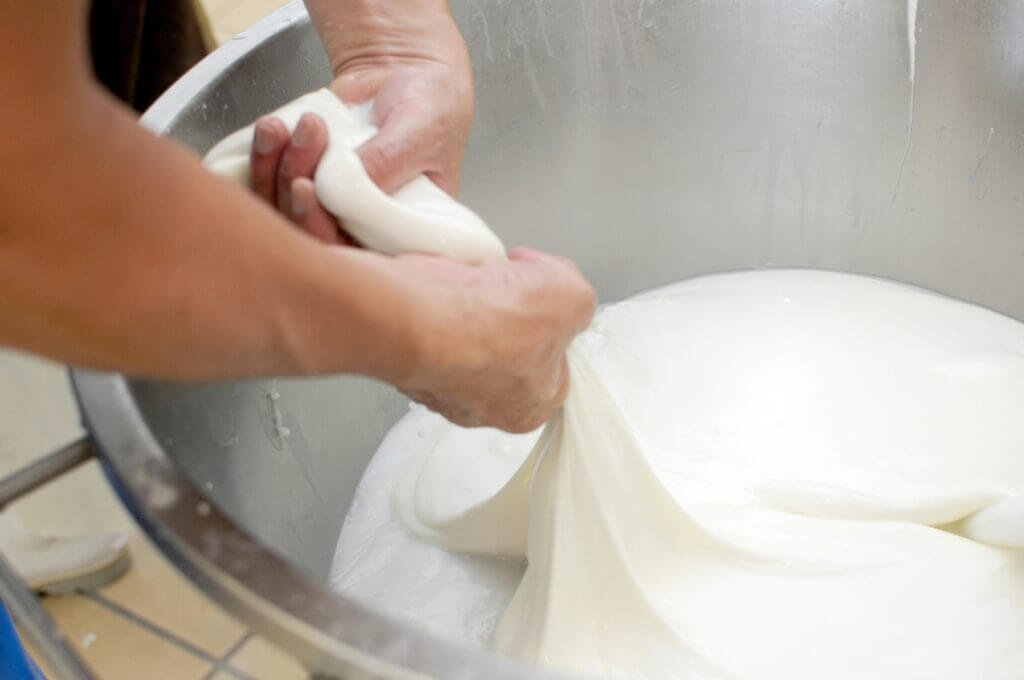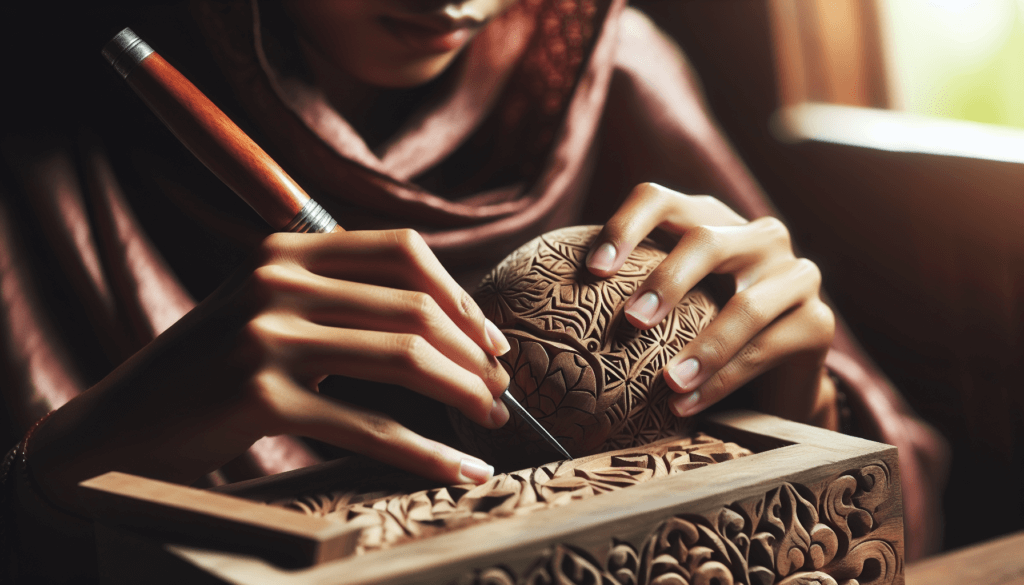You’ve probably heard the term “artisan handcrafted” tossed around, especially when talking about jewelry, food, furniture, or some other kind of product. But, what does it actually mean? Is it a new trend, a marketing ploy, or something genuine? In this article, you’ll find out what “artisan handcrafted” truly stands for and how it can add substantial value to anything bearing this title. Explore the real essence of artisan handcrafted items: their creation process, uniqueness, quality, and how they celebrate the craft of skilled craftsmen. The world of artisan handcrafted goods is full of fascinating stories that might even enhance your appreciation for these items. Let’s discover it together.

Understanding the term ‘Artisan’
Artisan is a term that has graced many a product’s label in grocery stores and boutiques alike. But what does it truly mean?
Origins and etymology of ‘Artisan’
The word ‘artisan’ originates from the Latin term ‘artitus’, which translates directly to ‘teacher of arts’. It was adopted in the English language from the French ‘Artisan’, which means a craftsperson. Perhaps the best way to define an artisan, based on its origins, is a skilled worker in a trade that makes things by hand.
Modern usage of the term ‘Artisan’
Today, the term ‘artisan’ has broadened to include producers who use traditional methods or processes to create high-quality, distinct, and specialized goods, often in small quantities. The term implies a sense of craftsmanship, expertise, and authenticity, which are appealing to discerning consumers who appreciate the time, effort, and skill needed to make these goods.
Common misconceptions about ‘Artisan’
Some common misconceptions about the term ‘artisan’ are conflating it with ‘handmade’ or ‘homemade’, misunderstanding it to mean ‘locally produced’, or thinking it is exclusively associated with food and beverages. It’s important to note that while an artisan’s products may embody these elements, they are not defining characteristics of the term ‘artisan’.
Knowing the term ‘Handcrafted’
Just like ‘artisan’, ‘handcrafted’ is another term that has become prevalent amongst product descriptions, especially in the contemporary market.
Origins and etymology of ‘Handcrafted’
The term ‘handcrafted’ is somewhat self-explanatory. It is the past participle of the verb ‘handcraft’, which means to make something manually or using the hands. It emphasizes human involvement in production, contrasting with mass production by automated machines.
Distinguishing between ‘handmade’ and ‘handcrafted’
Some people often use ‘handmade’ and ‘handcrafted’ interchangeably. Although they have many similarities, there’s a subtle difference. The term ‘handmade’ implies that a product was made by hand, but it doesn’t necessarily mean it was made with an exceptional level of skill. Conversely, ‘handcrafted’ suggests not only manual creation but also a certain level of craftsmanship, precision, and artistry.
The significance of the term ‘Handcrafted’
Handcrafted products are valued for their originality, quality, and the tactile connection they provide with their makers. They have a personal touch and narrative, making them more special than mass-produced goods.

The Concept of ‘Artisan Handcrafted’
Merging the terms ‘artisan’ and ‘handcrafted’ brings forth a unique concept – one that infuses the qualities of both elements.
Combining ‘Artisan’ and ‘Handcrafted’: What does it mean?
When you hear the term ‘artisan handcrafted’, it refers to a product that is expertly crafted by hand by a master of the trade or craft. It embodies authenticity, unique design, superior quality, and heartfelt passion, often drawing from traditional production methods.
Importance of ‘Artisan Handcrafted’ in today’s market
Despite living in an age of mass production and digitization, there’s a growing appreciation for artisan handcrafted products. Not only do they provide a counterpoint to factory-made products, but their attributes – authenticity, quality, and distinctiveness – are increasingly sought after by consumers.
Application of ‘Artisan Handcrafted’ in different industries
Artisan handcrafted isn’t confined to a specific industry. It spans a spectrum of sectors, including food and beverages, fashion and textiles, jewelry, ceramics, furniture, and more, captivating the consumer’s desire for unique, high-quality products.
Artisan Handcrafted in Art and Creativity
Artistry and creativity are at the heart of artisan handcrafted products.
Historical perspective of artisan handcrafted art
Historically, almost all art was artisan handcrafted, from sculpted statues to painted canvases. The artisans’ hands were the primary tools in bringing their imagination to life, each piece bearing the unique fingerprints of its creator.
Artisan handcrafted art in the contemporary scene
Contemporary art embraces the concept of artisan handcrafted. Artists create unique pieces, offering a counterpoint to the mass-produced art synonymous with our digital era. Pieces are not only aesthetically appealing but also meaningful, often reflective of the culture, story, and spirit of the artisan.
The future of artisan handcrafted art
Artisan handcrafted art is expected to continue to flourish, given the rising demand for unique, meaningful, and high-quality art pieces. It is also increasingly being recognized as a sustainable art practice, another factor contributing to its anticipated longevity.

Artisan Handcrafted in the Food and Beverage Industry
The concept of artisan handcrafted isn’t just limited to the world of arts and crafts.
Popularity of ‘Artisan Handcrafted’ in food production
Artisan handcrafted goods have found a favorable niche in the food and beverage industry. From hand-roasted coffee to handmade cheeses, consumers are drawn to the uniqueness, quality, and flavor profile of these products. They evoke a strong sense of tradition and heritage and are perceived as healthier and more sustainable options.
Examples of artisan handcrafted food and drinks
Think of traditionally made sourdough bread, specialty chocolates carefully tempered and molded by hand, craft beers brewed in small batches, locally made sausages – the list is endless.
The impact of ‘Artisan Handcrafted’ on the food and beverage industry
The rise of artisan handcrafted food and drinks has significantly impacted the food and beverage industry. It challenges mass-produced goods, promotestraditional food production methods, and encourages sustainability. Moreover, it stimulates the creation of new market niches and unique culinary experiences.
Artisan Handcrafted in the World of Fashion
The application of the term ‘artisan handcrafted’ extends to the fashion industry as well.
Role of artisan handcrafted in fashion and textiles
Artisan handcrafted pieces in fashion incorporate intricate details, traditional techniques, and superior materials. They are typically made in small quantities and often preserve cultural heritage and craftsmanship – qualities that are appealing to consumers looking for sustainable and ethical fashion choices.
Choosing artisan handcrafted clothing and accessories
When you opt for artisan handcrafted fashion, you are choosing authentic, unique, and high-quality products. They’re items with a story, a connection with their maker, and a reflection of the time and effort put into creating them.
Sustainability and artisan handcrafted fashion
The artisan handcrafted approach to fashion aligns with sustainability goals. Traditional production methods usually have a smaller carbon footprint than mass production. Artisan fashion also champions ethical work conditions and fair wages for artisans.

Artisan Handcrafted in Jewelry and Accessories
Jewelry and accessories also partake in the artisan handcrafted tradition.
How artisan handcrafting shapes the jewelry industry
An artisan-crafted piece of jewelry is more than something to wear; it’s a piece of art. The personal touch, exquisite detail, and unique design of artisan-crafted jewelry can’t be replicated by mass-produced counterparts.
Identifying artisan handcrafted jewelry
How can you recognize an artisan handcrafted piece? Look for original designs, beautiful and carefully crafted details, and quality materials. Often, artisans will share the story behind their creation, adding to the allure of the piece.
Benefits and drawbacks of artisan handcrafted jewelry
Artisan handcrafted jewelry has many benefits, such as uniqueness, high quality, and a personal touch. However, they may also come with a higher price tag due to the time, effort, and expertise required to create them.
The Economic Impact of Artisan Handcrafted
The surge of artisan handcrafted goods has economic implications as well.
Artisan handcrafted and local economies
Artisan handcrafted products can significantly boost local economies. They stimulate economic activity by encouraging local production, supporting small enterprises, and attracting tourism.
Global impact of artisan handcrafted goods
On a broader scale, the demand for artisan handcrafted goods facilitates trade between countries, opening new markets, and promoting cultural exchange through goods.
Job creation and economic diversification because of artisan handcrafting
Artisan handcrafting creates jobs – not just for the artisans themselves but also in related industries. It also encourages economic diversification, providing an alternative to mass-production-oriented industries.

Environmental Impact of Artisan Handcrafted Goods
The environment is a critical stakeholder in the production of artisan handcrafted items.
Sustainability and environmental friendliness of artisan handcrafted goods
Artisan handcrafted goods are often hailed as more sustainable and environment-friendly. Traditionally, artisans make use of local and natural resources, reducing transport and thereby decreasing carbon emissions.
The waste and pollution aspect of ‘Artisan Handcrafted’
Unlike mass-production processes which generate significant waste, artisanal methods typically produce less waste and pollution. Artisans often repurpose materials and leftovers, further reducing their environmental impact.
How artisan handcrafted practices can promote ecological conservation
By aligning with principles of sustainability and ecologically responsible practices, artisan handcrafting can contribute to conservation efforts. It encourages the sustainable use of resources and raises awareness about the environmental cost of mass production.
Criticisms and Controversies of ‘Artisan Handcrafted’
While artisan handcrafted goods flaunt various benefits and desirable characteristics, they are also subject to criticisms and controversies.
Overuse and misuse of the term ‘Artisan Handcrafted’
‘Artisan Handcrafted’ has become a buzzword, occasionally used as a marketing gimmick without truly embodying the essence of the terms. This overuse can dilute the true value of genuinely artisan handcrafted products and misleading for consumers.
The ‘authenticity’ debate over artisan handcrafted goods
Authenticity is a big selling point for artisan handcrafted items. But as mass producers try to replicate artisan techniques, the line can become blurry in determining what is genuinely artisan handcrafted.
Pricing controversies related to artisan handcrafted products
Artisan handcrafted goods typically come with a higher price tag. While many customers are willing to pay for quality, originality, and ethics, others argue these goods can be exclusionary due to their higher cost.



